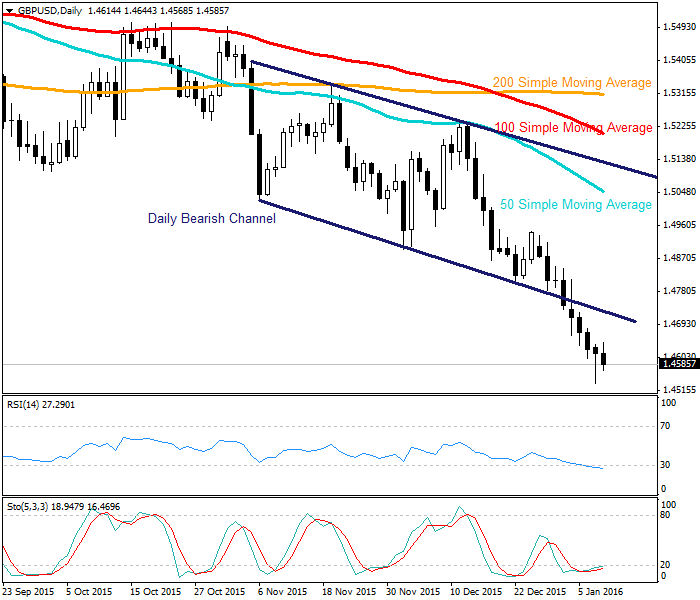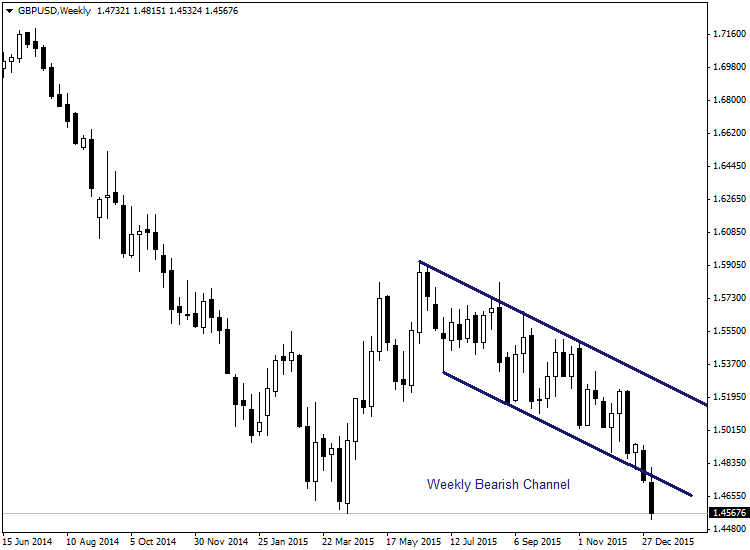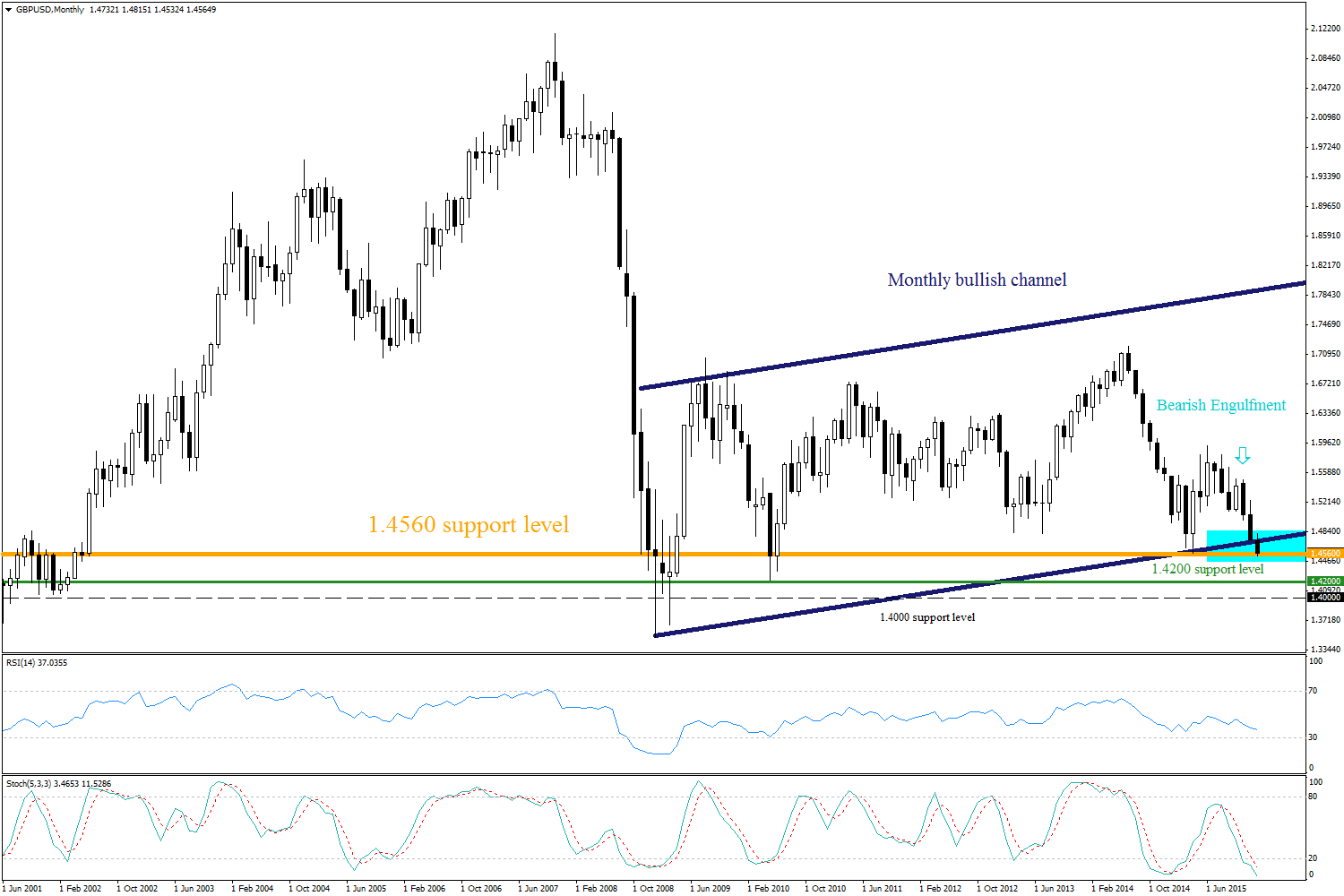Recent history from early last year is returning to haunt the Pound and we are once again currently witnessing the currency suffer from a complete lack of investor attraction. There are a number of different reasons around why the Pound is suffering from low investor attraction with the most recent being pressure on the global equity markets, which whether being due to continuously depressed commodity markets or increased geo-political tensions, is inviting a risk-off trading environment from investors. We first noticed that the Pound suffered from a risk-off trading environment following the historical events of Black Monday in late August 2015, and this is very much a trend that is resuming throughout the early weeks of January.
There are also other reasons why the Pound is suffering from minimal investor attraction with this including continued inflation weakness, a recent deterioration of economic data which is creating downside pressures to GDP prospects and also a regular occurrence or perhaps even prolonged pushed back UK interest rate expectations. These risks to investor sentiment do not even include the negative market implications a Brexit vote would bring, which could be severe regardless of how far the Pound has already dropped. Recent reports in major publications about the Pound being the most overvalued currency in the world and some speculating that it could potentially fall as low as into the 1.20’s against the USD will also prevent the potential for a recovery.
Notoriously low inflation is also providing Bank of England (BoE) policy makers with a compounding reason to repeatedly push back UK interest rate expectations. If I am being honest and if it wasn’t for the unexpected inflation risks following the dramatic decline in the price of commodities, UK interest rates would have moved forward by now and most now believe that the ship for a UK interest rate rise anytime soon has now sailed. One of the most hawkish members of the Monetary Policy Committee (MPC) Martin Weale has now backtracked and publically stated that the case for rate rises is less immediate than before while more recent claims from Chancellor George Osborne that the UK economy could be dragged into the decline by a wide mixture of risks abroad is strong enough ammunition to close the door on any potential increases in UK interest rates.
Traders should also see the potential around a possible Brexit vote as a huge risk, despite the acceleration of Pound losses in recent weeks and even if a potential referendum has yet to be confirmed. The threat to the UK markets and the Pound would be severe if a referendum was announced and that’s even if the market expectations over a Brexit outcome were low. There would be all sorts of risks for investors to consider with this including threats of capital outflow and concerns that enterprises would threaten vacating UK operations. It should also be worth remembering that if BoE Governor Carney managed to encourage market anxiety by just expressing that the Grexit concerns last year would have an impact on UK financial stability, you would only have to imagine what his stance would be if a referendum was confirmed.
If it wasn’t already enough that the more negative than previously documented fundamental picture is representing risks to the Pound, the current weak technicals are also heavily encouraging traders to push prices even further lower. We noted regularly towards the final quarter of last year that traders watching the daily timeframe could see gains in the GBPUSD strictly limited to some of its main 50,100 and 200 moving averages and we have now moved onto a more depressing picture on both the weekly and monthly charts. The GBPUSD has now even slipped below its bearish channel on the weekly chart and we are focusing on the 1.4560 area being seen as huge psychological support on the monthly chart. Once the GBPUSD cleanly slips below 1.46, market expectations are going to substantially increase that the pair could fall to 1.42 and then possibly 1.40.
GBPUSD Daily Chart:
GBPUSD Weekly Chart:
GBPUSD Monthly Chart:
Comparebroker is a comparison site and we spend hundreds of hours to keep the information up to date. However, users are advised to do their own due diligence and nothing can be perceived any advise. The content on the website is purely for education purposes only
Recommended Content
Editors’ Picks
AUD/USD regains the constructive outlook above the 200-day SMA

AUD/USD advanced strongly for the second session in a row, this time extending the recovery to the upper 0.6500s and shifting its focus to the weekly highs in the 0.6580-0.6585 band, an area coincident with the 100-day SMA.
EUR/USD keeps the bullish performance above 1.0700

The continuation of the sell-off in the Greenback in the wake of the FOMC gathering helped EUR/USD extend its bounce off Wednesday’s lows near 1.0650, advancing past the 1.0700 hurdle ahead of the crucial release of US NFP on Friday.
Gold stuck around $2,300 as market players lack directional conviction

Gold extended its daily slide and dropped below $2,290 in the second half of the day on Thursday. The benchmark 10-year US Treasury bond yield erased its daily losses after US data, causing XAU/USD to stretch lower ahead of Friday's US jobs data.
Bitcoin price rises 5% as BlackRock anticipates a new wave of capital inflows into BTC ETFs from investors

Bitcoin (BTC) price slid to the depths of $56,552 on Wednesday as the cryptocurrency market tried to front run the Federal Open Market Committee (FOMC) meeting. The flash crash saw millions in positions get liquidated.
FOMC in the rear-view mirror – NFP eyed

The update from May’s FOMC rate announcement proved more dovish than expected, which naturally weighed on the US dollar (sending the DXY to lows of 105.44) and US yields, as well as, initially at least, underpinning major US equity indices.


